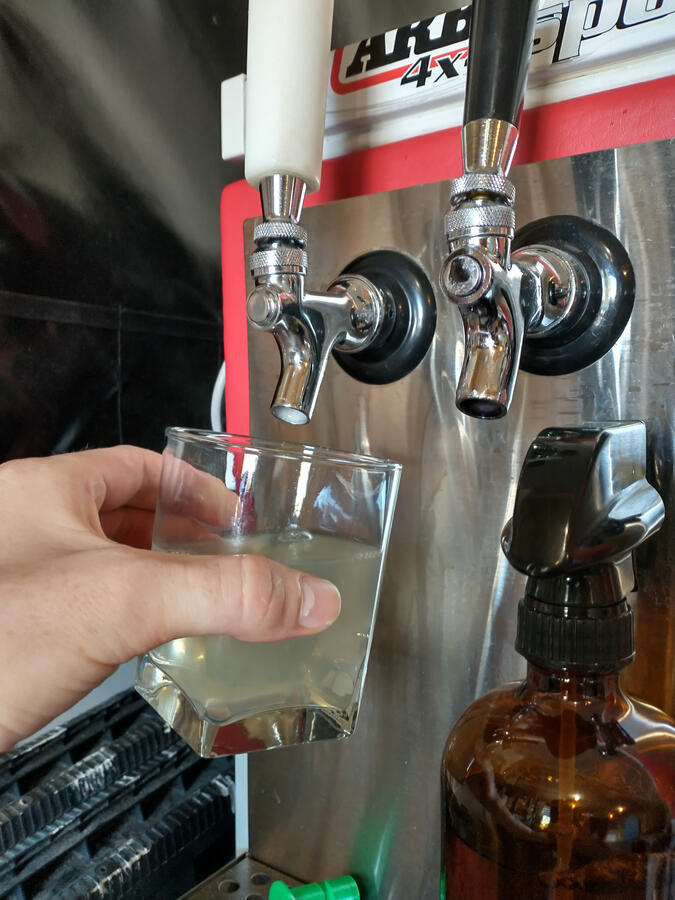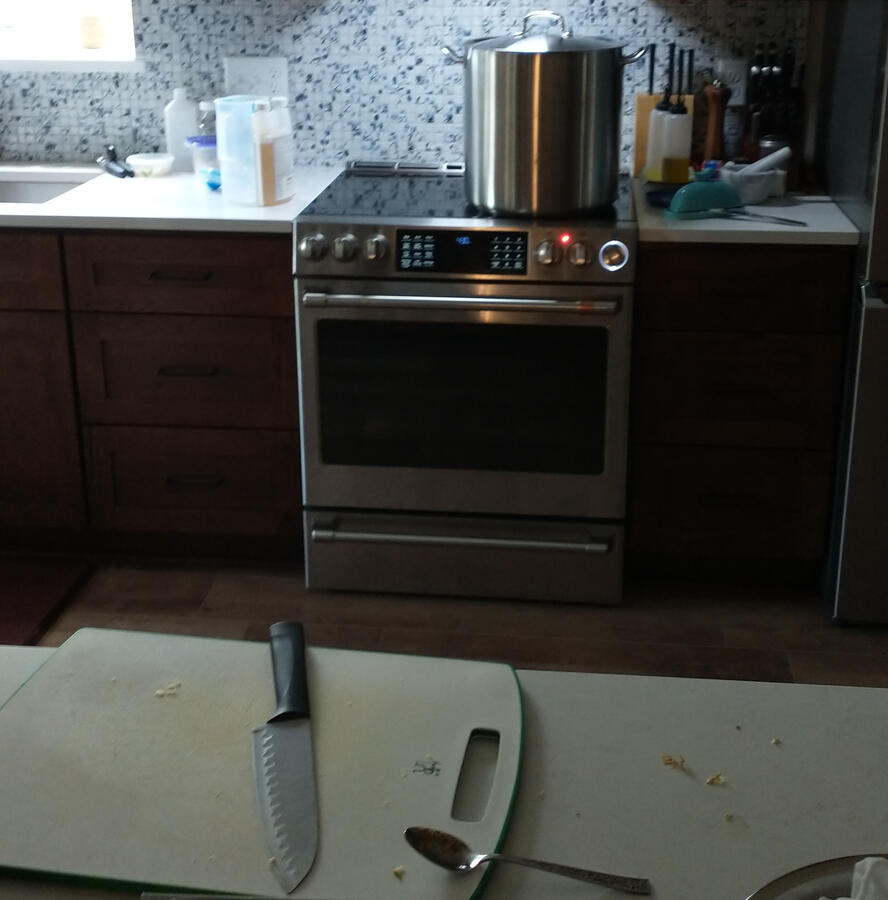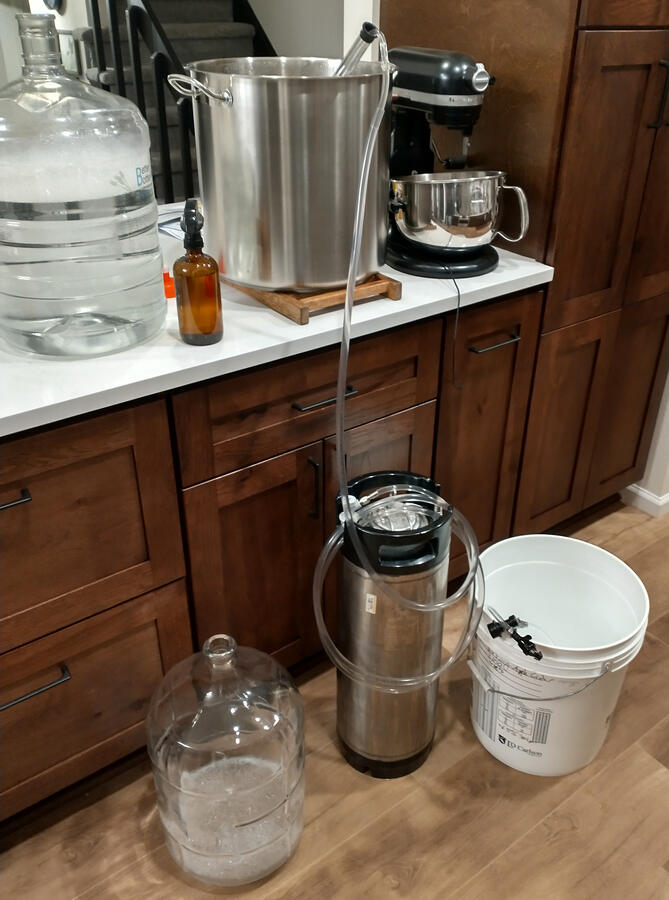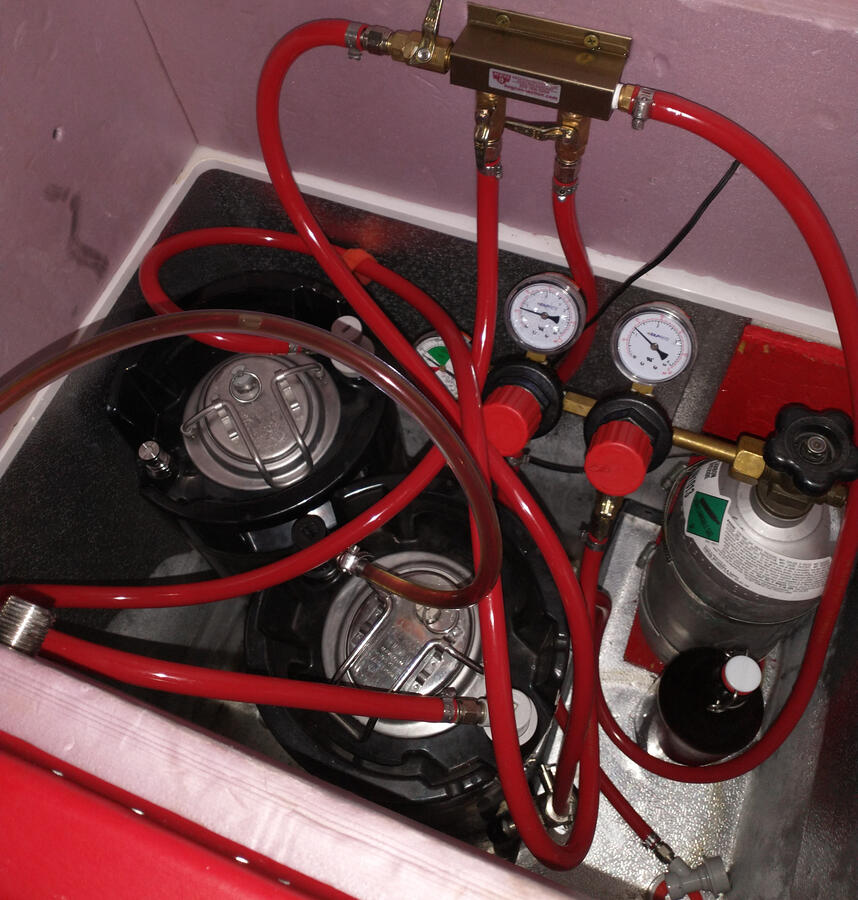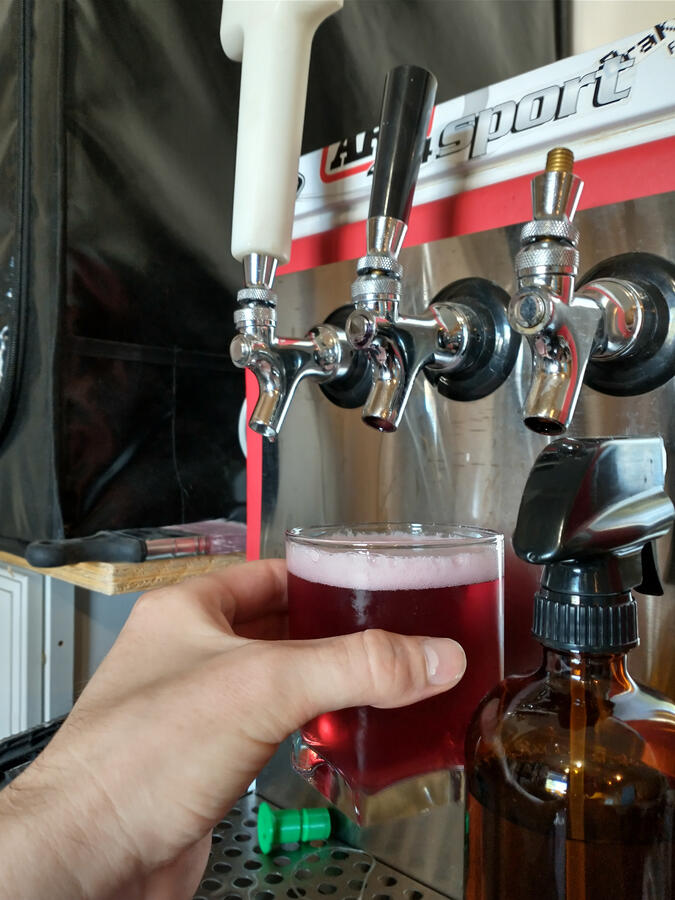Earlier this year, in August, I made a 5-gallon batch of ginger ale. Ginger ale is my favorite non-alcoholic fizzy drink, but I don’t like most of the stuff we can get in cans at the grocery store. We actually did a taste earlier this year and decided that Kure’s Ginger Beer is the best, with Canada Dry Bold in second. Of course, one of those is only available here in northern Colorado and the other is no longer available anywhere, so we had to make our own.
My friend taught me that ginger ale it is great to drink while, say, playing VR games, because it naturally reduces symptoms of nausea. I figured it would probably also be great to reduce symptoms of nausea in pregnancy, so I made a big batch of it.
I started with a recipe I found on a home brewing forum, and then my wife and I modified it while it was cooking. I ran back to the store to more than double the amount of ginger, and, when we sweetened it, we only put in about half the sugar. The cooking method is the same, though, and requires a big pot and a keg. Basically, you boil water and make a big pot of ginger tea, then sweeten or flavor it however you want before you keg it.
Basic Ginger Ale Recipe
In addition to the ingredients, you will need brewing sanitizer, a keg, brewing equipment, a stock pot that can easily hold the liquid volume, and a cheesecloth bag to hold the stuff while it steeps.
I didn’t specifically include sanitizing in the instructions, but it’s extremely important to sanitize anything that comes in contact with the brew, either by boiling it (like the pot will be sanitized) or with a sanitizing solution. This is 90% of brewing, and it’s reflexive if you’re already a germophobe.
Ingredients
Makes 5 gallons of ginger ale with a full-volume boil and forced carbonation.
If you plan to make it super fizzy, you probably need to scale the recipe up to account for the waste when you rack it.
- About 2 pounds of fresh ginger, peeled and sliced thin
- 2 1/2 pounds of white sugar
- 4 lemons
Instructions
- Bring 5 gallons of water to a boil in a big stock pot.
- Clean and peel the ginger root, then slice it into thin discs and put it in a cheesecloth bag.
- Once the water is boiling, put the cheesecloth bag in the pot to steep for about an hour.
- Taste it to make sure it is gingery enough
- Juice the lemons and pour the juice in, ideally through the cheesecloth bag to filter out any pulp.
- Pull the bag out and mix in the sugar. Soda sweetness is a personal preference, so make sure to taste it.
- Cool the pot down somehow. It doesn’t need to be room-temperature, it just needs to be cold enough that you don’t melt your plastic equipment. No one wants microplastics in their ginger ale. If you have a wort chiller, that’s cool ;), otherwise, I usually just put my pot in the sink in a few inches of water and ice packs, and replace that water when it gets hot.
- Rack it, if you feel like it.
The key to fizzy drinks is eliminating nucleation surfaces. Racking is where you wait for the suspended particles to sink to the bottom, and then you siphon off the top liquid and avoid the sludge at the bottom. This is really effective at getting rid of suspended particles, but it leaves behind usually a pint or two of waste liquid.
In this case, the waste liquid is basically just cloudy sweet ginger tea, so just drink it, it’ll taste good.
I want my ginger ale to be about as sparkly as champagne, and I have decided I don’t really need to rack it before kegging to accomplish that. - Keg it.
I always start by filling my keg to the brim with StarSan sanitizer, then hooking the keg up to a CO2 tank and pushing all the sanitizer out of the keg. This will both sanitize the inside of the keg and replace the air in it with CO2, both of which will extend the shelf life of the ginger ale. If you are not careful, you will put the volume of air in the siphon hoses into the keg when you siphon the liquid, but I have never cared about that.
- Pressurize it.
I always slow-carbonate my brews. I know that I could quick-carb them, but it will take a day or two for my refrigerator to thoroughly cool the ginger ale anyway, so I will just set the CO2 pressure at 30-35 PSI for about a week, shaking it a couple times in the first few days.
- Serve it.
Once the carbonation is done, you can drop the pressure to a serving pressure like 10-15 PSI and pour a glass.
Fizzy, refreshing, and a nice punch of ginger. I also made a batch of triple-berry cider this summer, so I often poured myself a mixed glass of ginger ale and cider, which is delicious.

